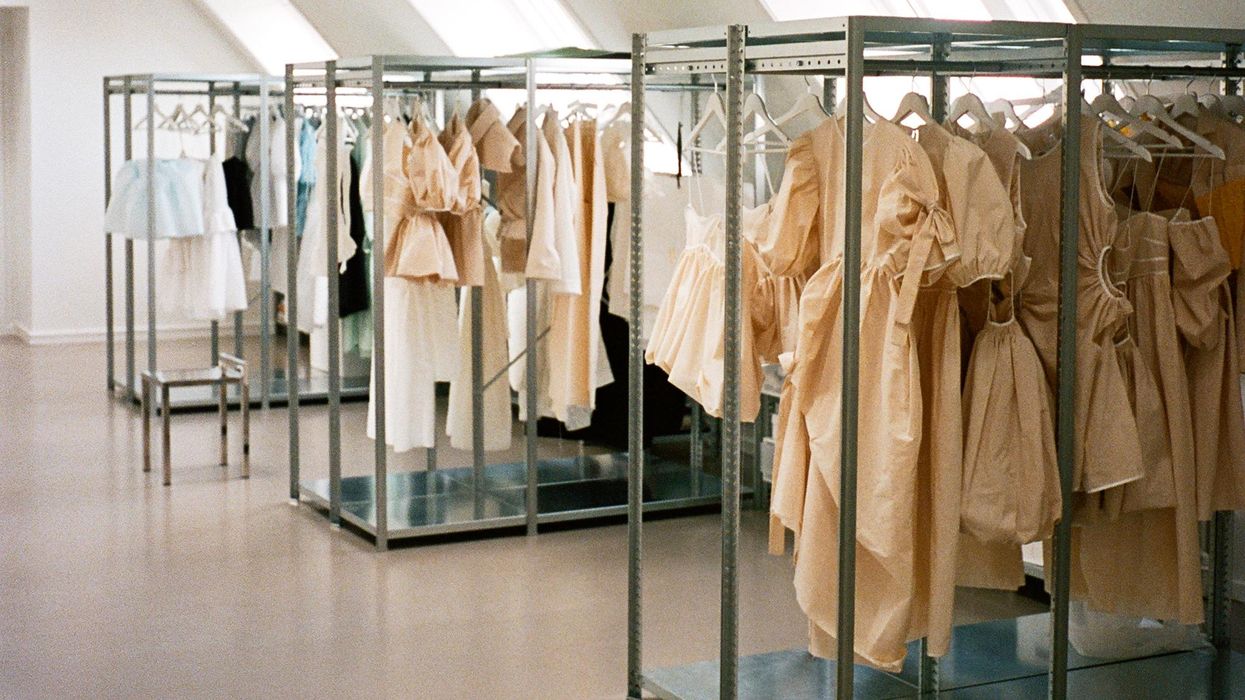
Cecilie Bahnsen wears pieces from her own collections about 90% of the time. More often than not, she's paired those feminine frocks with a sneaker—Salomons are a favorite. “It's always been about the flats,” she says. The founder of her eponymous label prefers to add an element of utility to offset her bulbous, ruffled confections. Bahnsen also finds inspiration in watching customers do the same, whether they're adding a hoodie or a pair of cargo trousers to the outfit equation. She’d rather see her sartorial flora against dripping wet hair or chunky sneakers than with a sparkly pair of heels. The pieces, more akin to sculpture than fashion, take on a new life with this contrast. The team's new Copenhagen office offers the same aesthetic foil.
In the Danish city's creative Osterbro neighborhood, Bahnsen's frothy feminine confections hang from chrome racks above concrete floors. Mirrors divide the space in two and offer a 360-degree view of each piece. She designed the office with the help of creative agency Moon, the architects at Stamuli. The furnishings, like the architecture, are sparse. The industrial space houses a Magniberg stainless steel chair, Studio X office tables and lighting, Paustian seating, and Artek stools (the latter are re-purposed from previous runway shows). If the furniture skews toward Scandinavian minimalism, even brutalism, the decor aligns more with the eccentricity of the fashion. Blobby, colorful glassware by friend and frequent collaborator Nina Nørgaard perches in various locations throughout the space. All of which bolster the essence of her brand.
Bahnsen received an MA from the The Royal College of Art in London then trained at John Galliano and Erdem. She launched her own label in 2015. A deep respect for construction instilled in her, the designers collections bloom from the fabric. "A lot of inspiration literally comes from this passion of just touching the fabric, making things with your hands," she explains. Moodboards come last. In retrospect, Bahnsen ruminates on her creations in order to expand her ideas from a handful of dresses to an immersive fashion show. This past Spring ‘23 season, the cohesive thread turned out to be a meditative take on water. So for the show, Nørgaard, with the help of Moon, constructed a glass installation which they then filled with water to serve as the de facto centerpiece.
In a similar fashion, the office design also came to fruition in response to the clothes. The curation served as an exercise in brand identity. The result exemplifies how the clothing translates to a comprehensive universe. Whether it’s a utilitarian shoe, a Magniberg metal chair, or a haunting playlist of synthesized beats, her designs grow more potent offset with these minimalist elements. Now, the team uses the space for photo shoots, private appointments, and meetings, in addition to their day-to-day creative process. Gallery-like in nature and design, the office is Bahnsen's own creative laboratory. “It's an experimental place for us to define who we are, not just as a clothing brand.” Glimpse inside the Danish brand's creative haven below.
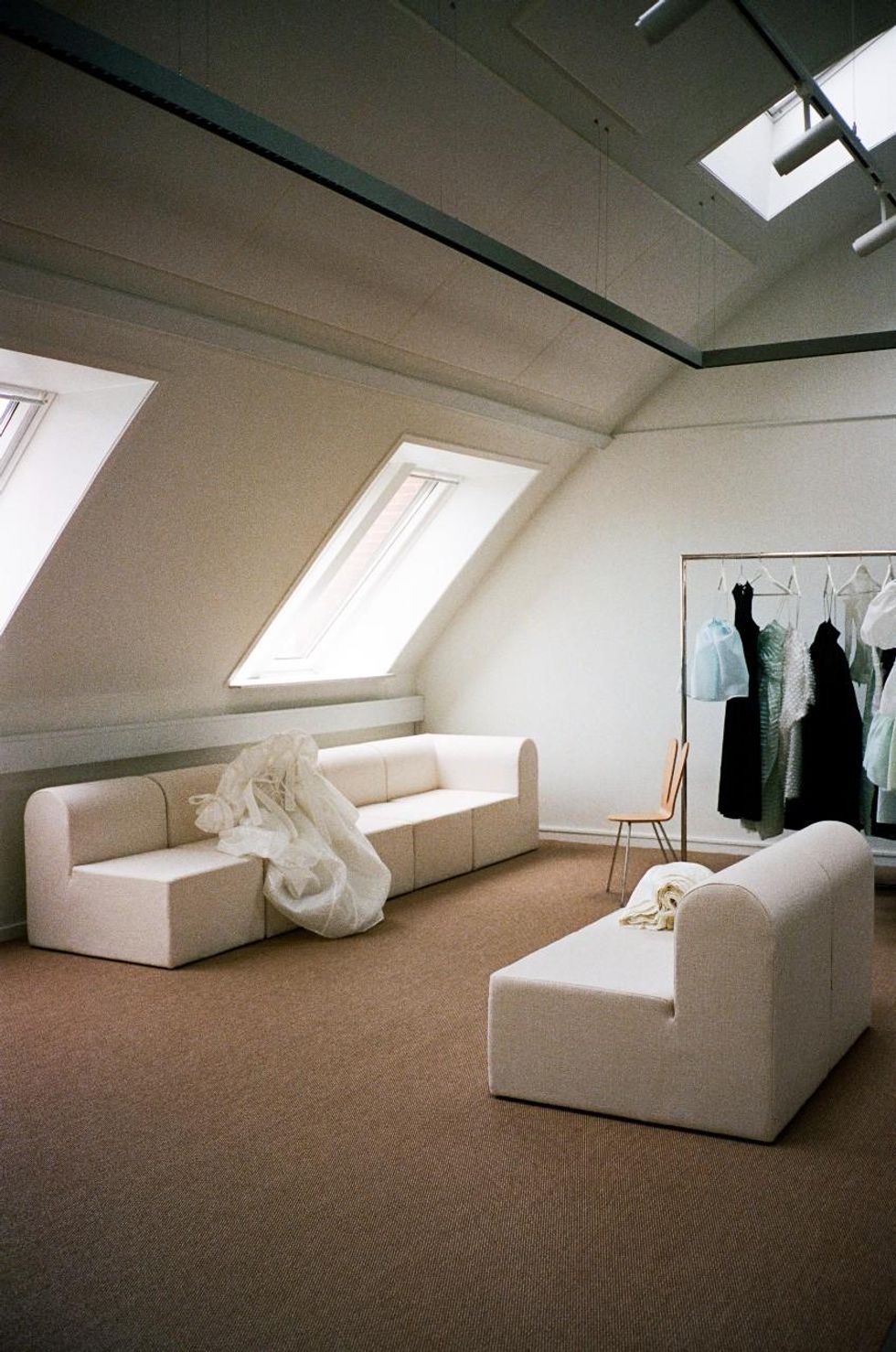
"When we were looking for the location, it was like looking for a show location. We wanted something quite simple to contrast this really feminine universe that we have."
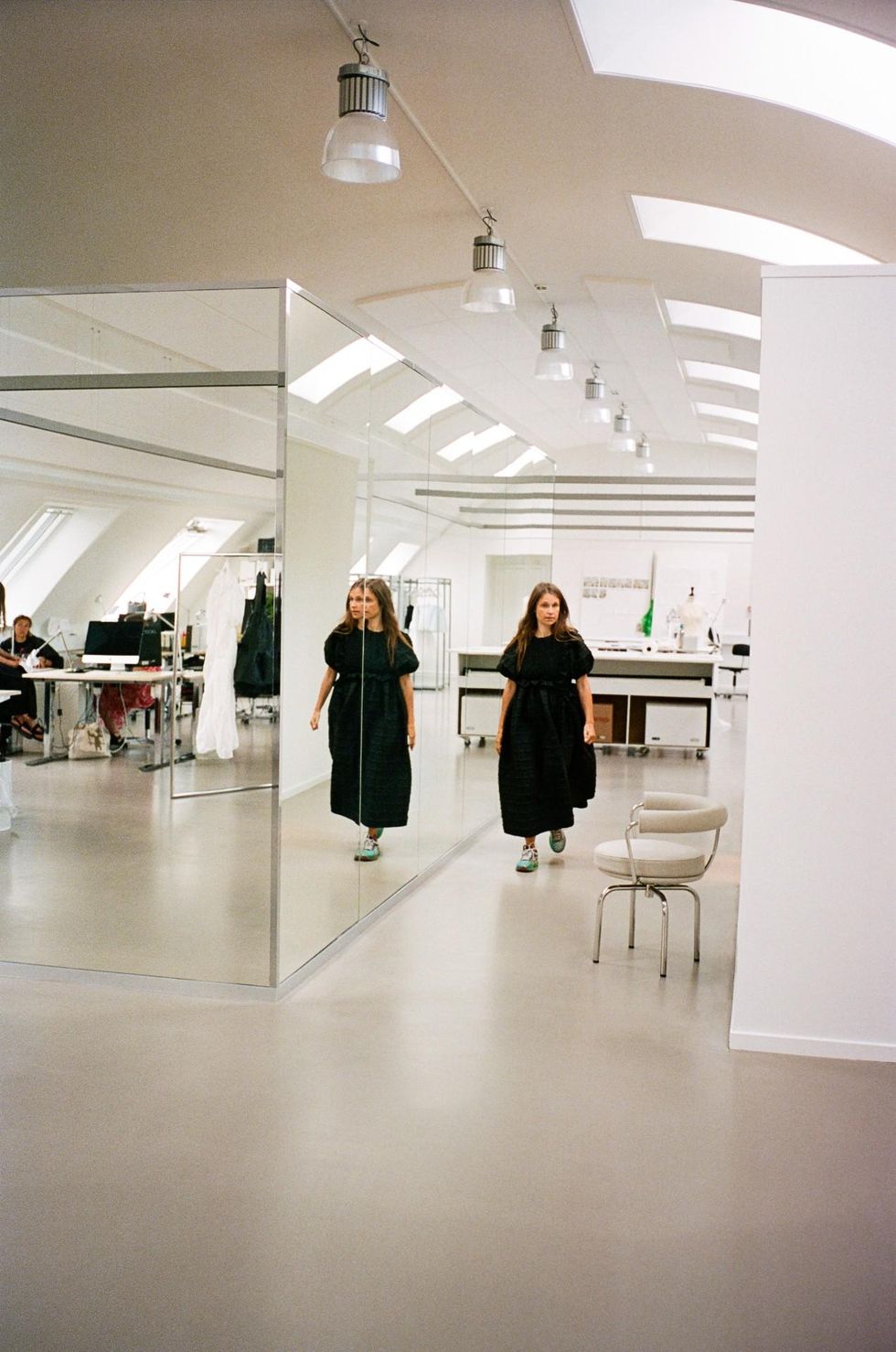
“I wanted to try and do fashion the way we do furniture and architecture, to try and create something you cherish, that you hold onto, that you love forever, that you want to pass on to your daughter, like you do with a piece of furniture. I wanted to bring some heritage into this industry that moves so fast. I also needed to step a little bit away from the fast pace and have time to develop and create and devote the passion that it takes to make one garment. That’s what started me on my own.”
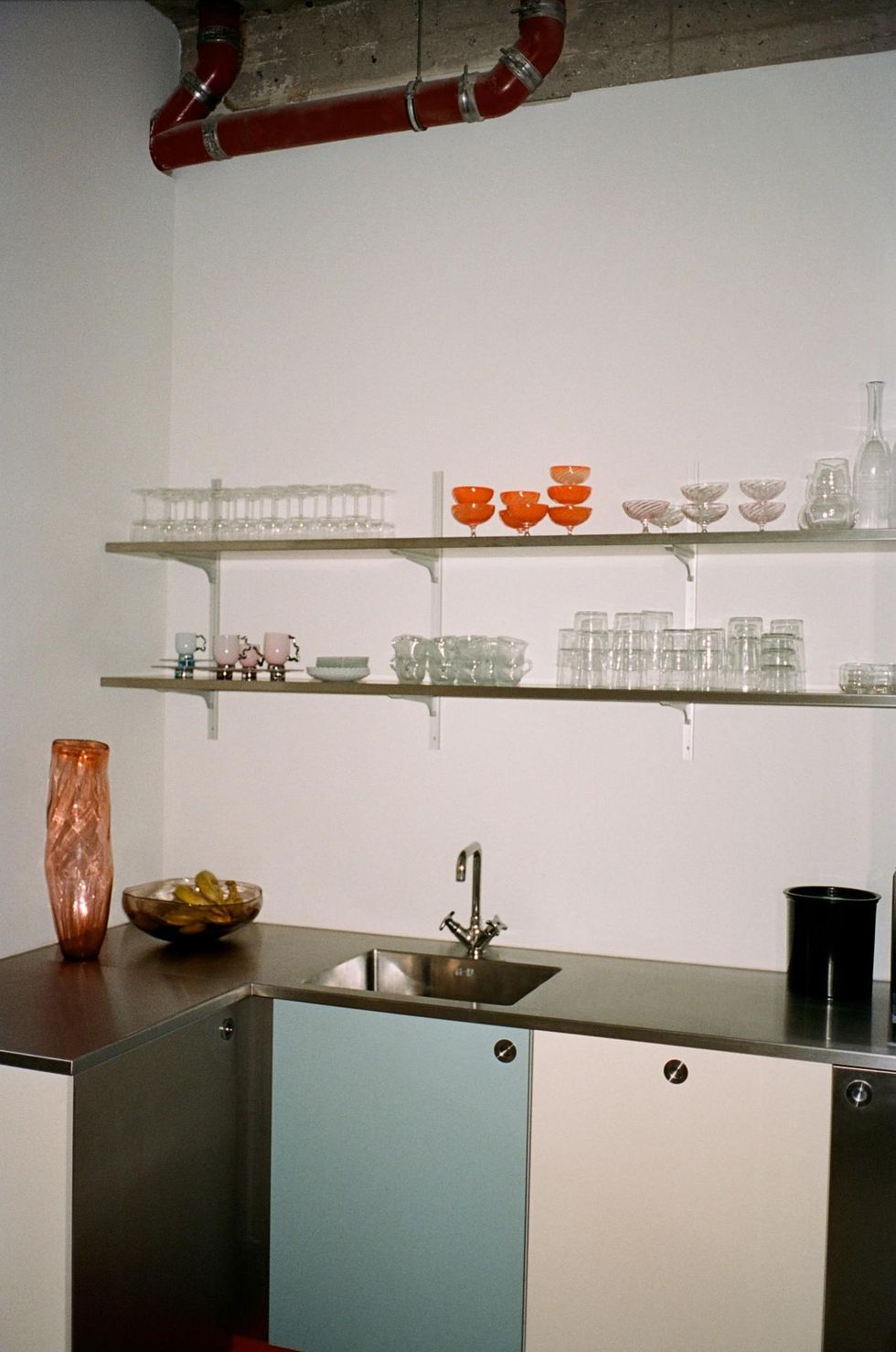
“I think the space definitely has a museum or a gallery vibe to it. I also think that what allows us to also have that approach is that it can change and adapt to what you need it to do. It is a creative space that can host an event one day and [something else the next], a bit like a gallery, I guess.”
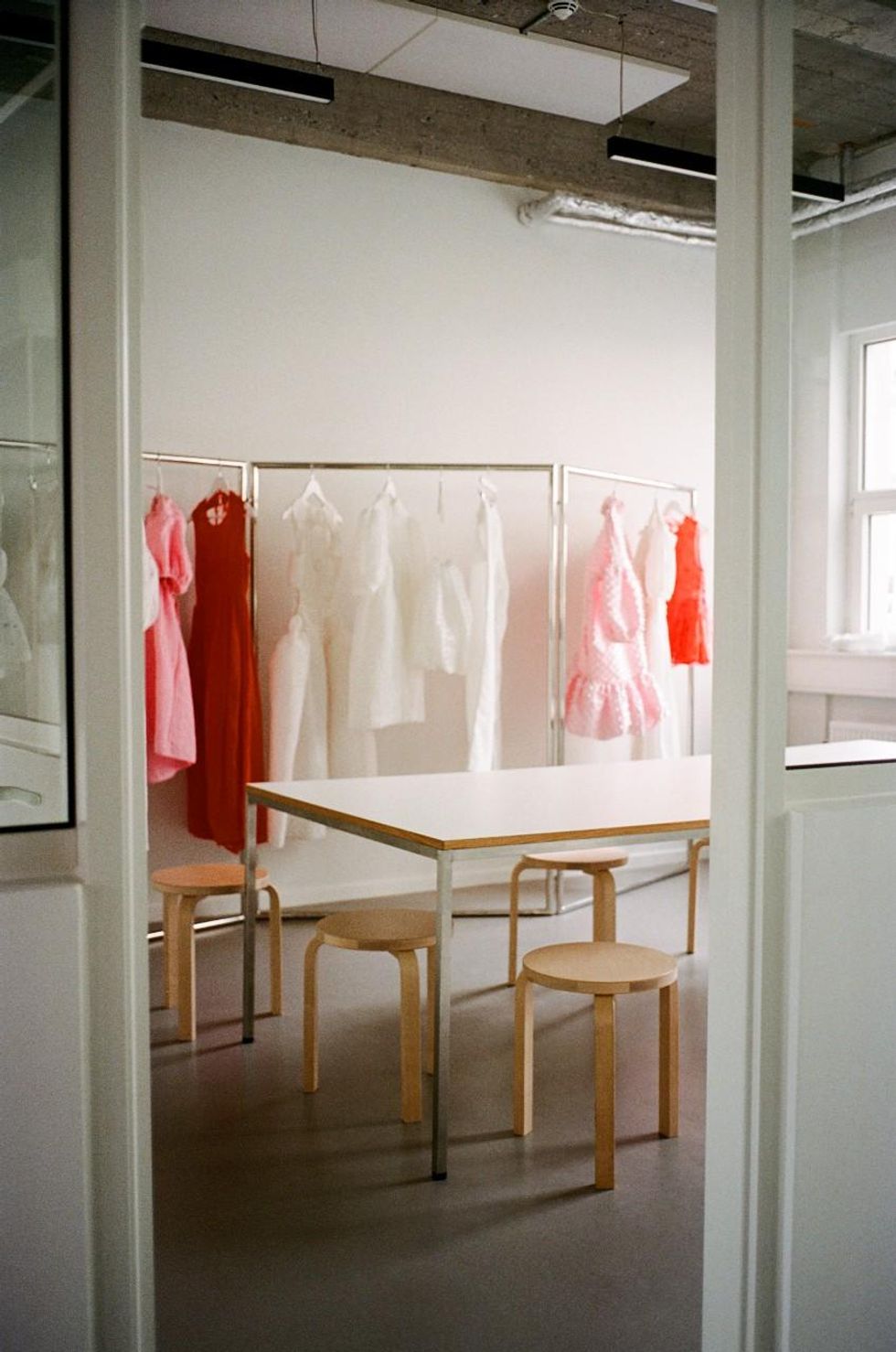
“One of my best friends in high school and I would literally go to the vintage shop and buy scarves and things that we would wear to parties. We would always be late because we had to make the outfit. So I think I’ve always just loved doing stuff with my hands. For me, it's my meditation, my relaxation. It's also always been a way to also connect with friends and so on. I think a lot of inspiration literally comes from touching the fabric. Also I wasn't good at the normal things at school—spelling or math. So [it was nice to] find your personality in something else.”
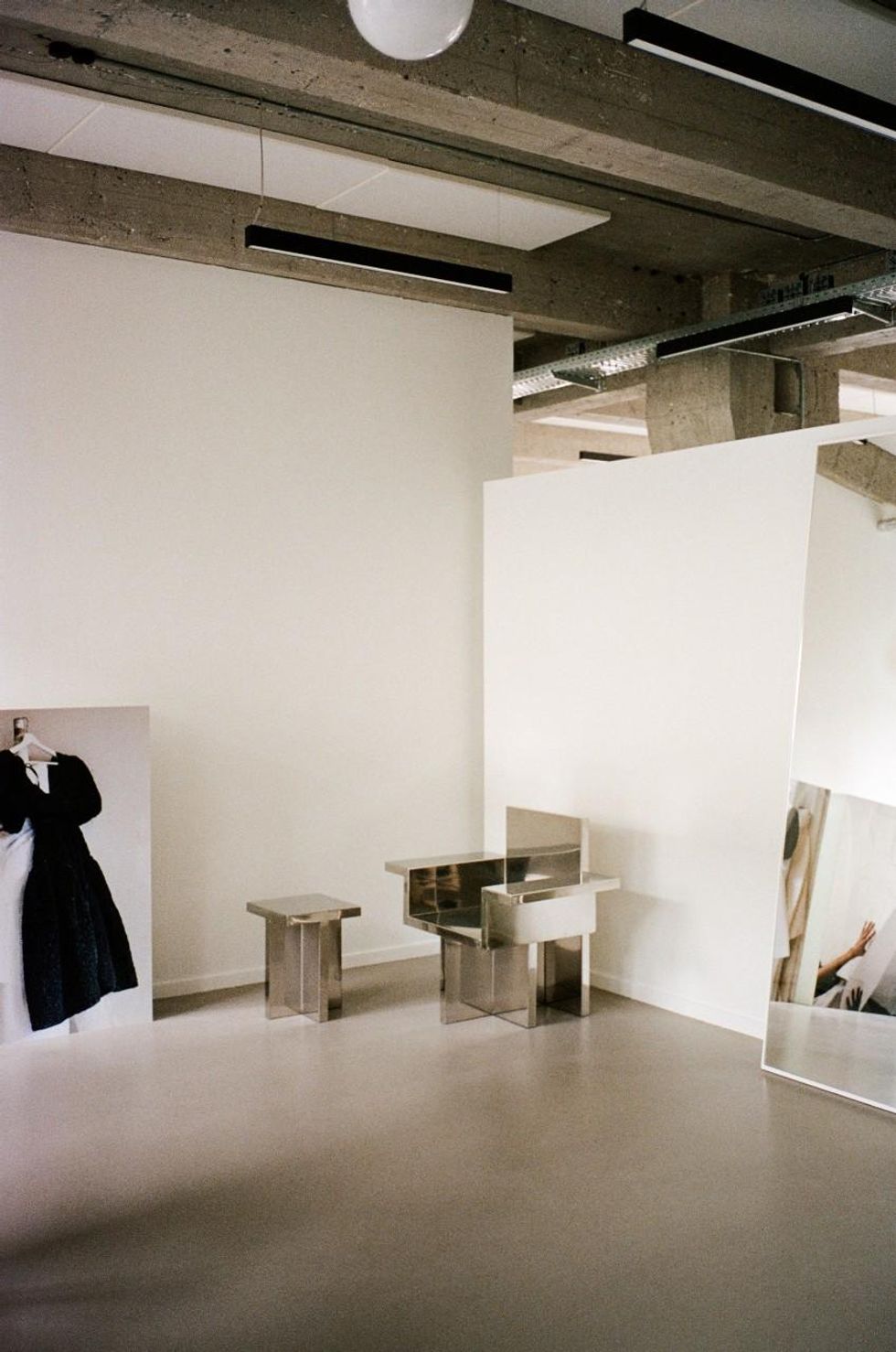
“I think that probably my team and most people wouldn’t say that we are minimalistic, but I actually think we do work with it quite a lot in the creative process, both in how we edit, how big the collection should be, whether there should be one bow or 10 bows. It's definitely a very romantic take on minimalism, what we do, but it's still a part of what I grew up with. It's a part of how I started looking at fashion. And then, so many influences from different places have shaped me since. I think minimalism on its own is boring, but I think it's an important contrast so something is not too romantic or too over the top. I think the same idea applies to a space. It's a contrast and I think it's in that fine balance that you define yours.”
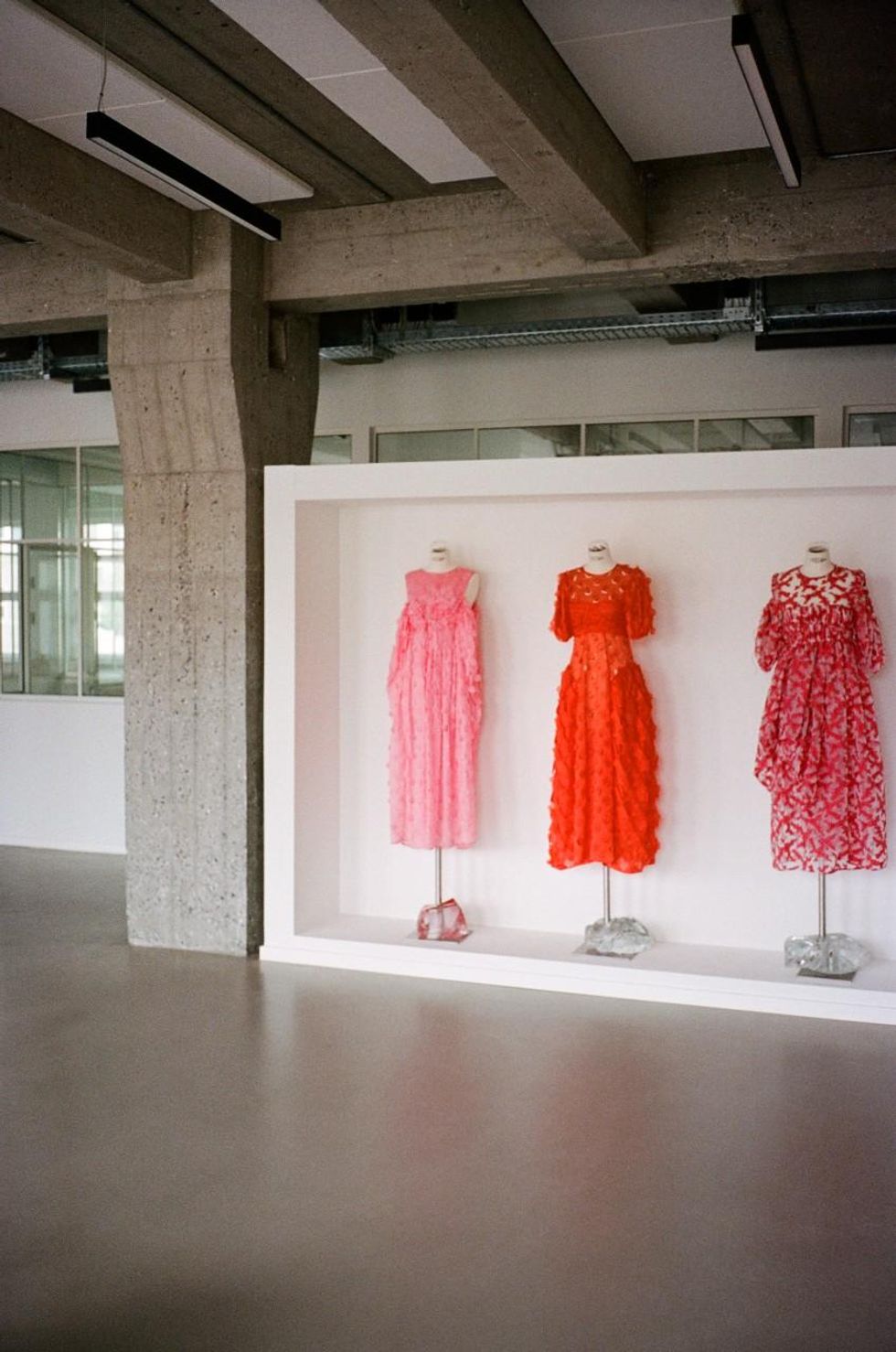
“There will be more but this is the beginning of defining what a Cecilie Bahnsen space is. We don't have a store yet, but we use this as our showroom. We use it for photoshoots. We use it for private appointments. I don't know if it's a laboratory, but it's an experimental place for us to define who we are, not just as a clothing brand. What is our aesthetic once we do a store in our clothing universe?”
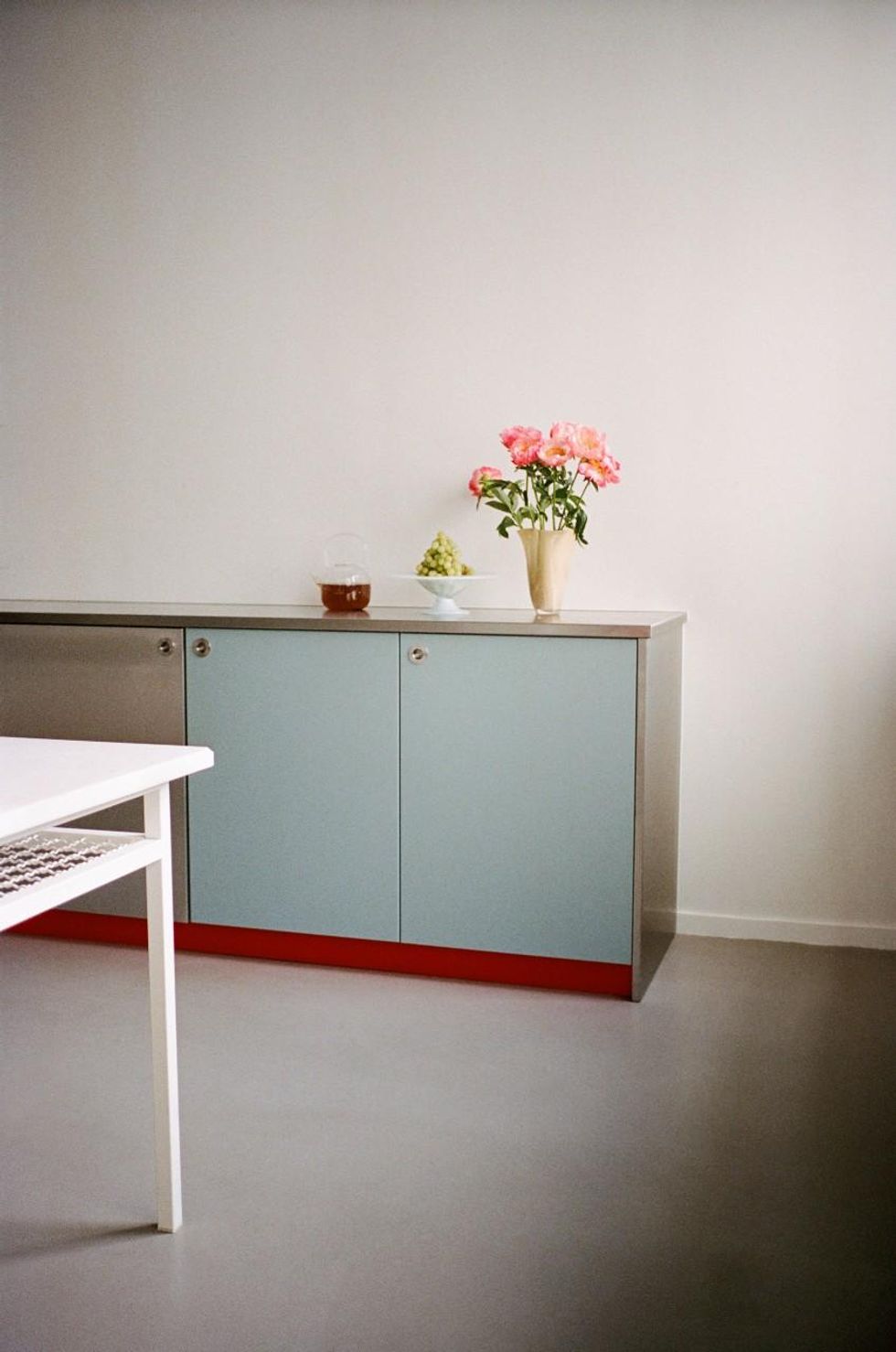
“Right now, it's the season for chrysanthemums. For me, it's really about the flowers of the season and what grows around us. But also, I have a strong memory from when I was in Japan probably five years ago in the fall. It actually turned out to be the chrysanthemum festival and it was so beautiful. We went to this flower show and they had all these paper umbrellas to cover the flowers, so they didn't get too much sun. So I might have taken chrysanthemums for granted before, but now I love them. Seeing how you can also really care for it, I think really inspired me as well.”
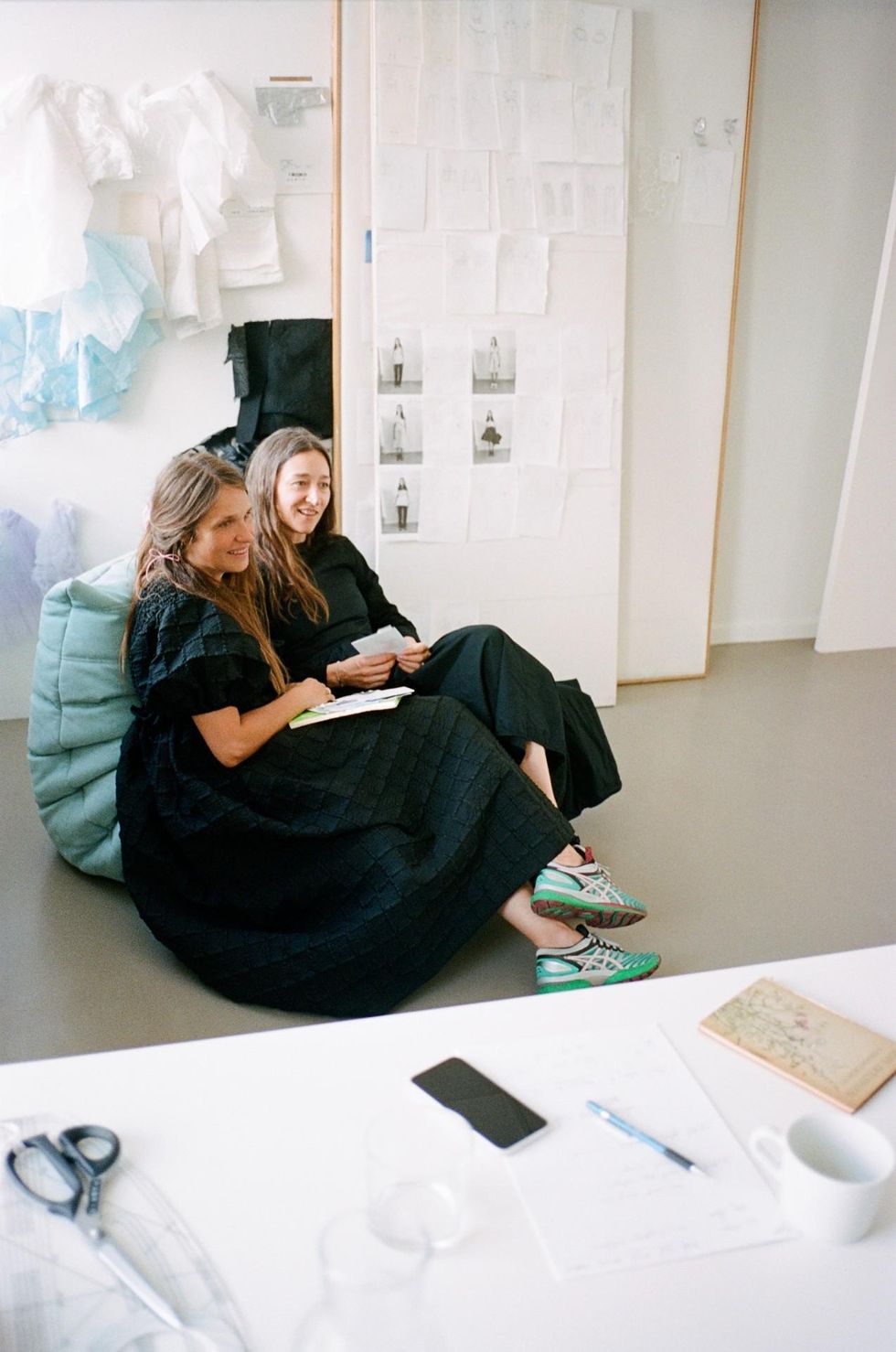
“I feel really happy and proud that we made it to this [point], but also a calmness and an inspiration. I feel like there's a magnet dragging me down to this design studio. It's this really special feeling, like it's second home. And the same [applies to] the team, it's also a second family. It's just very special place for me.”
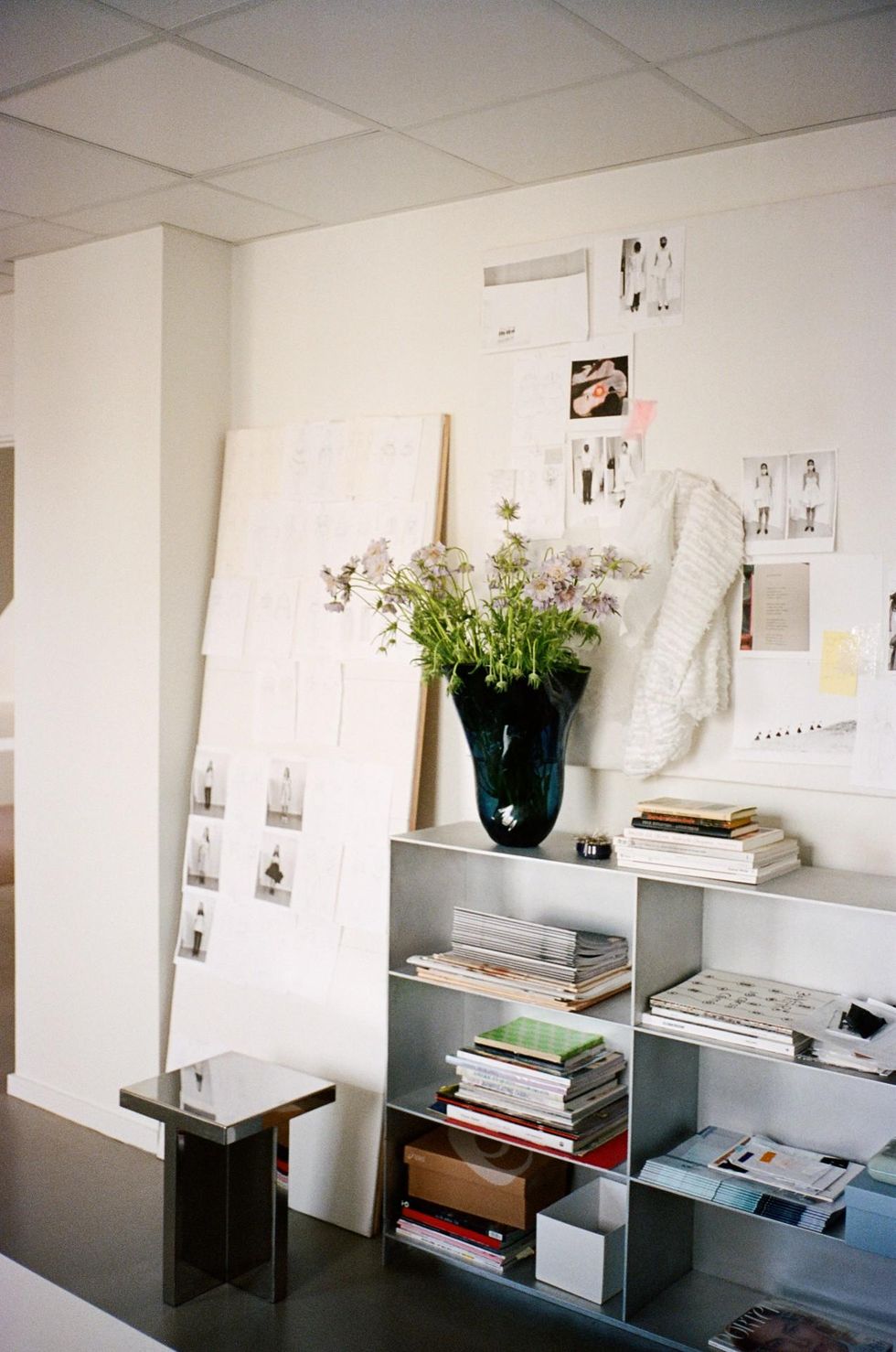
“The mood boards actually quite often come up more towards when we start defining the show concepts. It's refining that last sentence of what this show is, that precise, 'what is it we really want to say this season?’ We look at the collection, we look at the keywords, and then, we start building the mood board, we start building the show concepts, and it really comes to life. For me, the mood boards are very much an analytic part at the end of what we've done, more than what we start from, because we really start from the season before and refine that.”
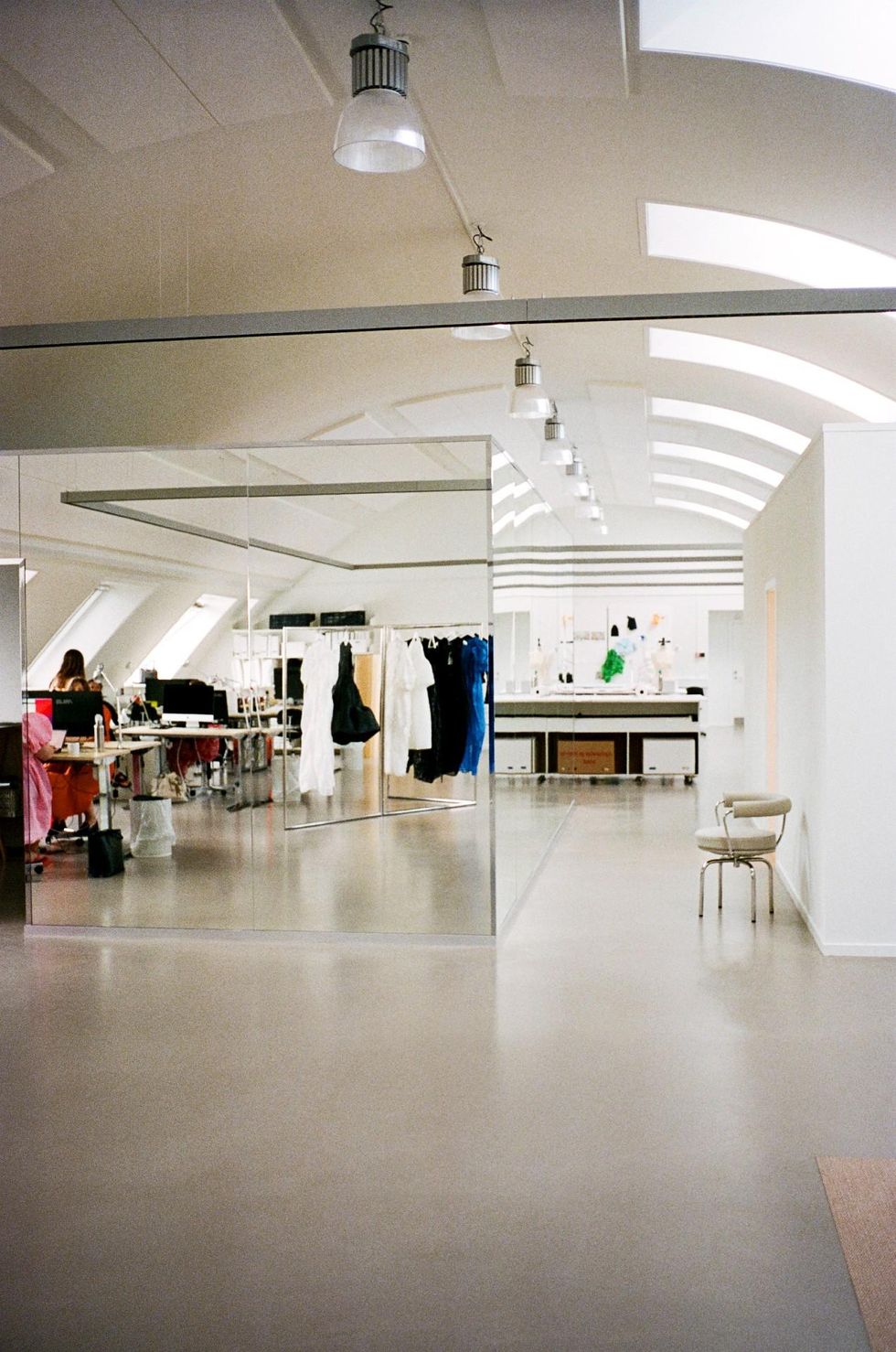
“We are quite minimal in the creative process, both in how we edit, how big the collection should be, whether there should be one bow or 10 bows. It's definitely a very romantic take on minimalism, what we do, but it's still a part of what I grew up with. It's a part of how I started looking at fashion. And then, so many influences from different places have shaped me since. I think minimalism on its own is boring, but I think it's an important contrast so something is not too romantic or too over the top. I think the same idea applies to a space. It's a contrast and I think it's in that fine balance that you define yours.”
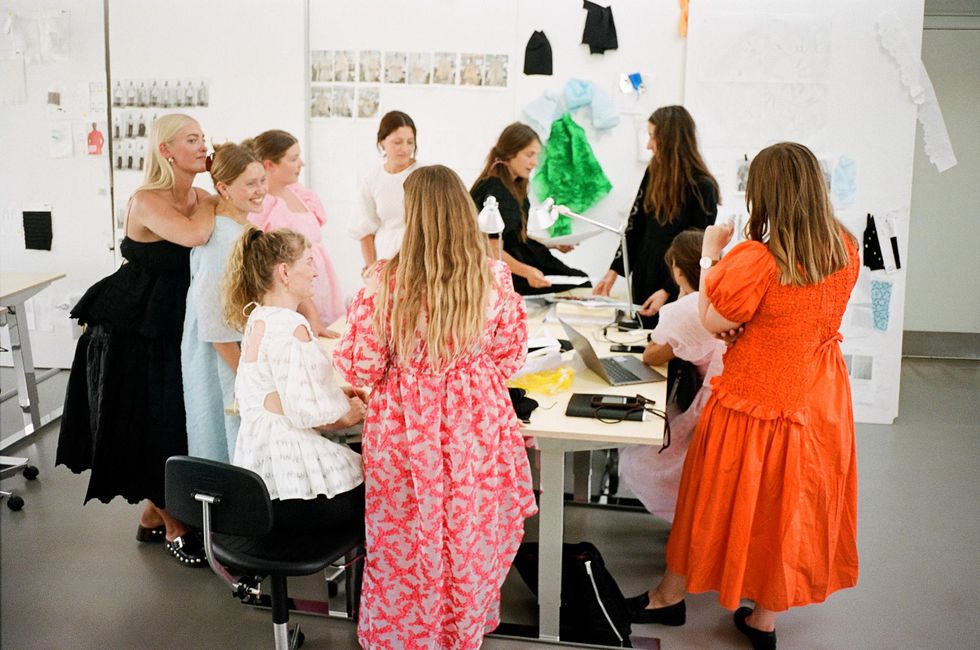
“Every time you add to the [Cecilie Bahnsen] universe, it's kind of daunting. It's always something that I wanted to do to complete the vision head to toe. How I see [a dress] with flats, but how I also think that you can do something quite comfortable and technical and utilitarian, but still have super feminine details. But to crack something that is still designed, but so far out of dresses, that just comes easy to me. It's also where when you crack it, then you really feel like you moved the brand even further. I think with each show and with each collection, we halfway add to the universe, we make sense of what we do. So it's daunting, but it's also super inspiring, because you constantly reflect and you don't do anything without being considerate about what you're doing.”
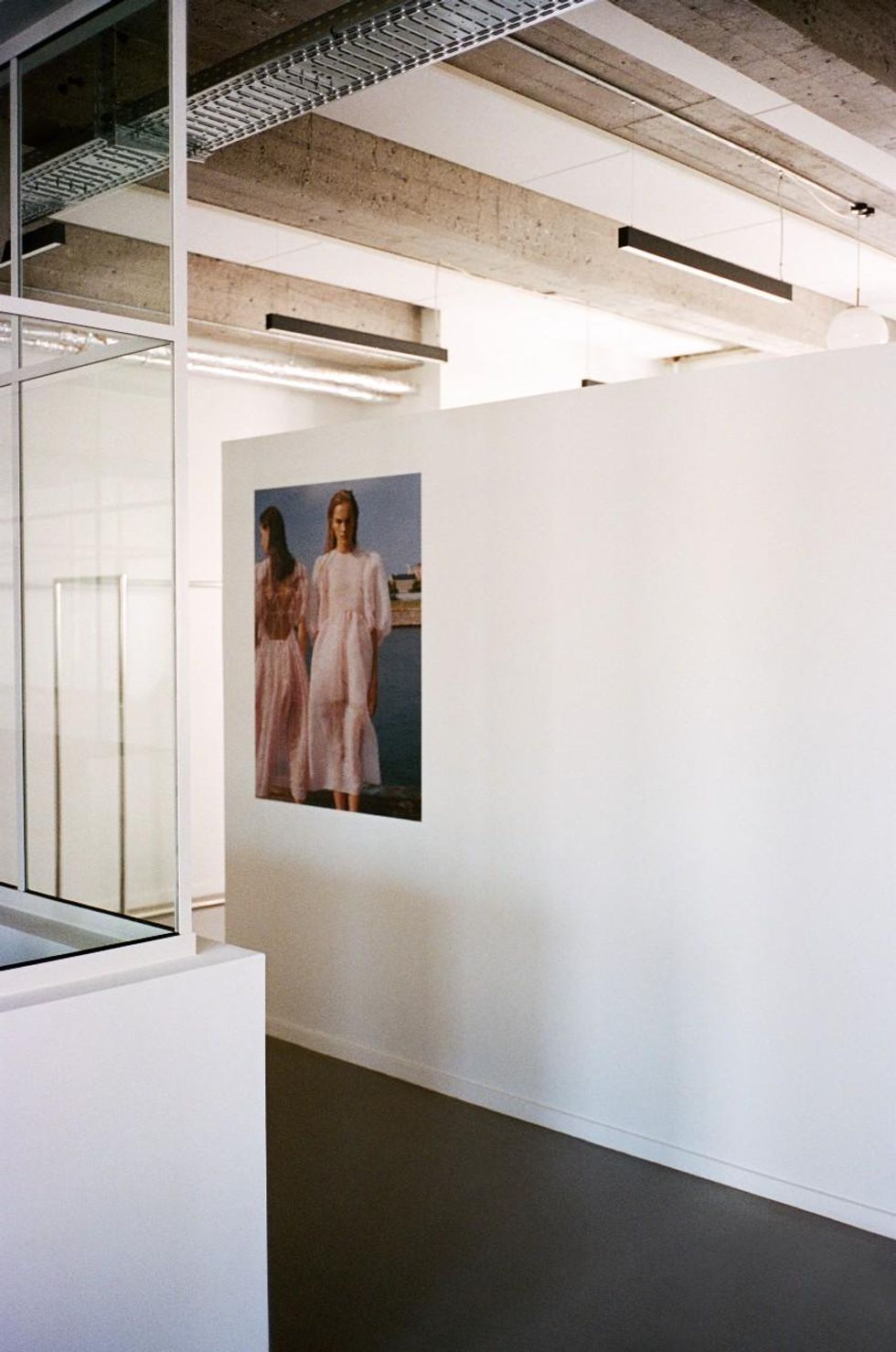
“More than visiting the bigger spaces, I really enjoy going to some of the smaller Copenhagen Art galleries, whether it's V1 or Nicolai Wallner, and seeing something new that surprises you or really talks to this time and makes you think and can turn some of your own ideas on their head. I think that's also why we've chosen to show in galleries a couple of times.”
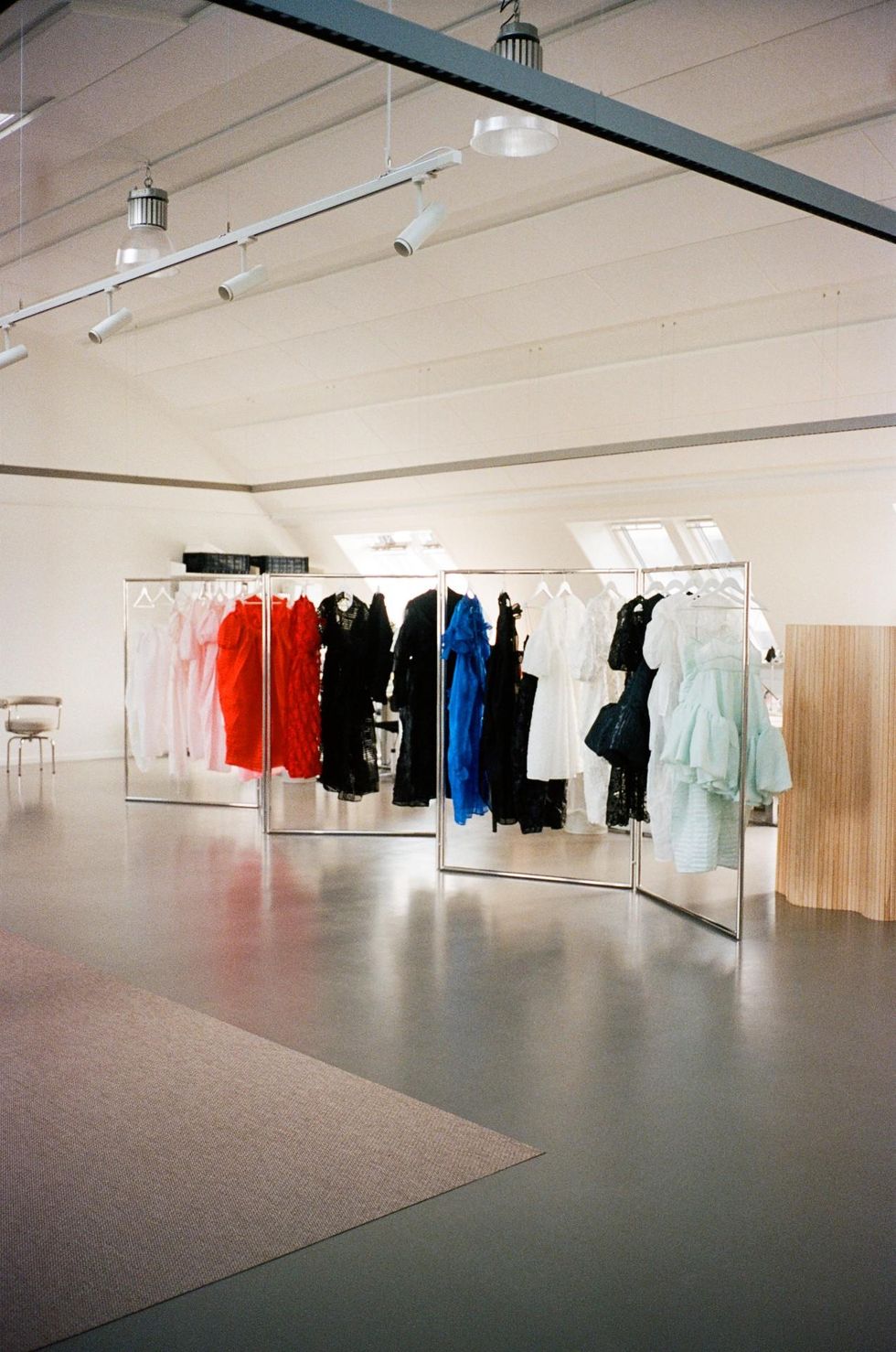
[With color, I'm super picky and super pedantic. We did lavender for the first time this season, and I typically hover around a color and knowing that we are going to eventually add. It's on the mood board for season. Then, I'll decide I'm not quite ready. I get used to them slowly so they might be on the inspiration board for a couple of seasons. I'll use it when it feels right. It's really about refining the tone. So it's too purple, it has a little bit more green in it. I think that's where I can maybe drive people a tiny bit mad with with finding the exact right shade. But because we do them as quite bold statements—it's not just a flower, it's a full orange dress —they need to be right. They define so much the collection that season."
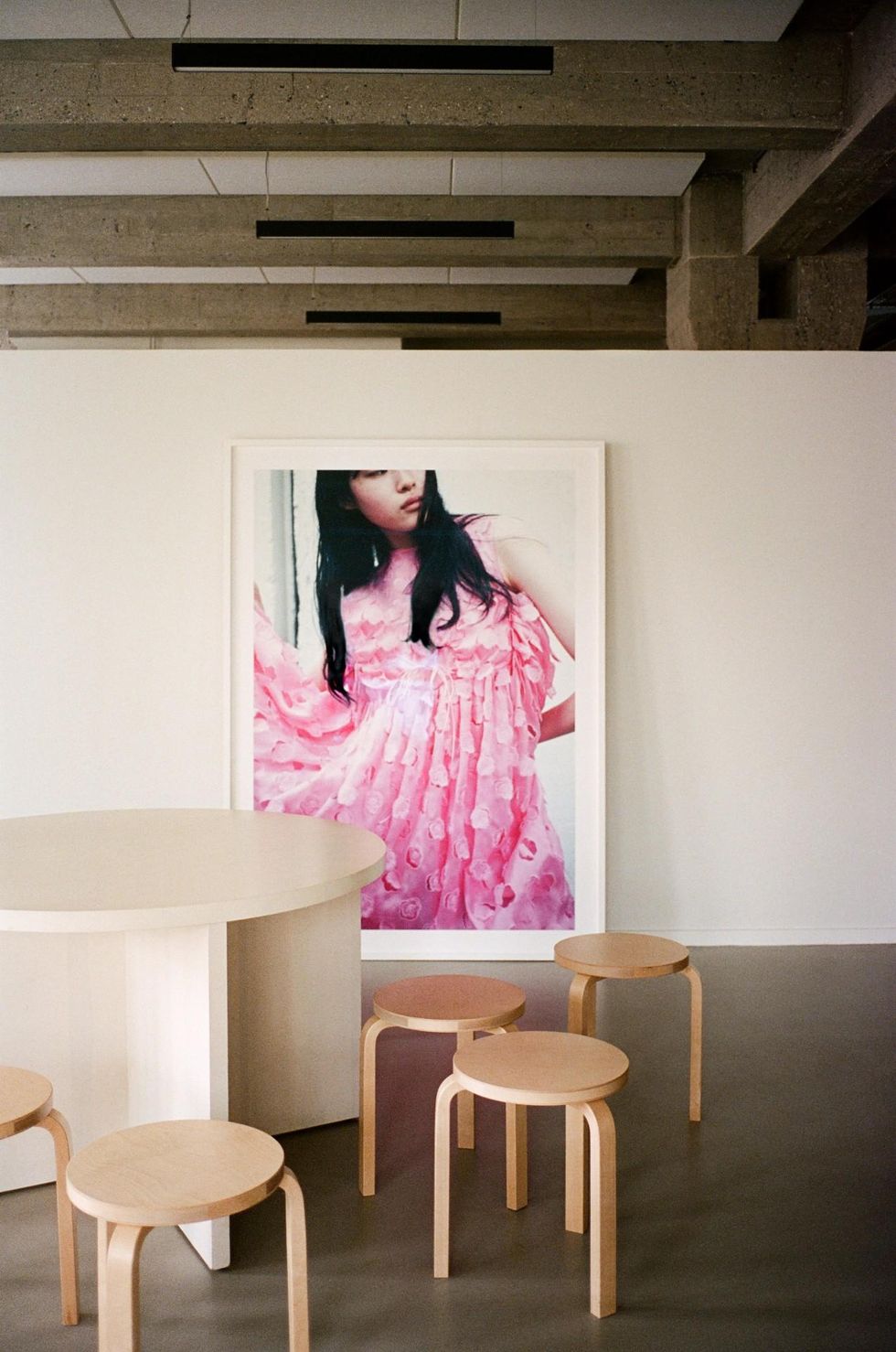
"I think [designers] need a really good team, and I'm very happy to have people around me whom I love and inspire me and bring really good ideas, but also challenge me. We can be really open about what works, what doesn't work. In fittings, it's really odd, but it gets really quiet just before you crack into something and then you can feel that everybody's super excited about it and it's coming together. There's definitely also something about sound, something about the music in the studio."
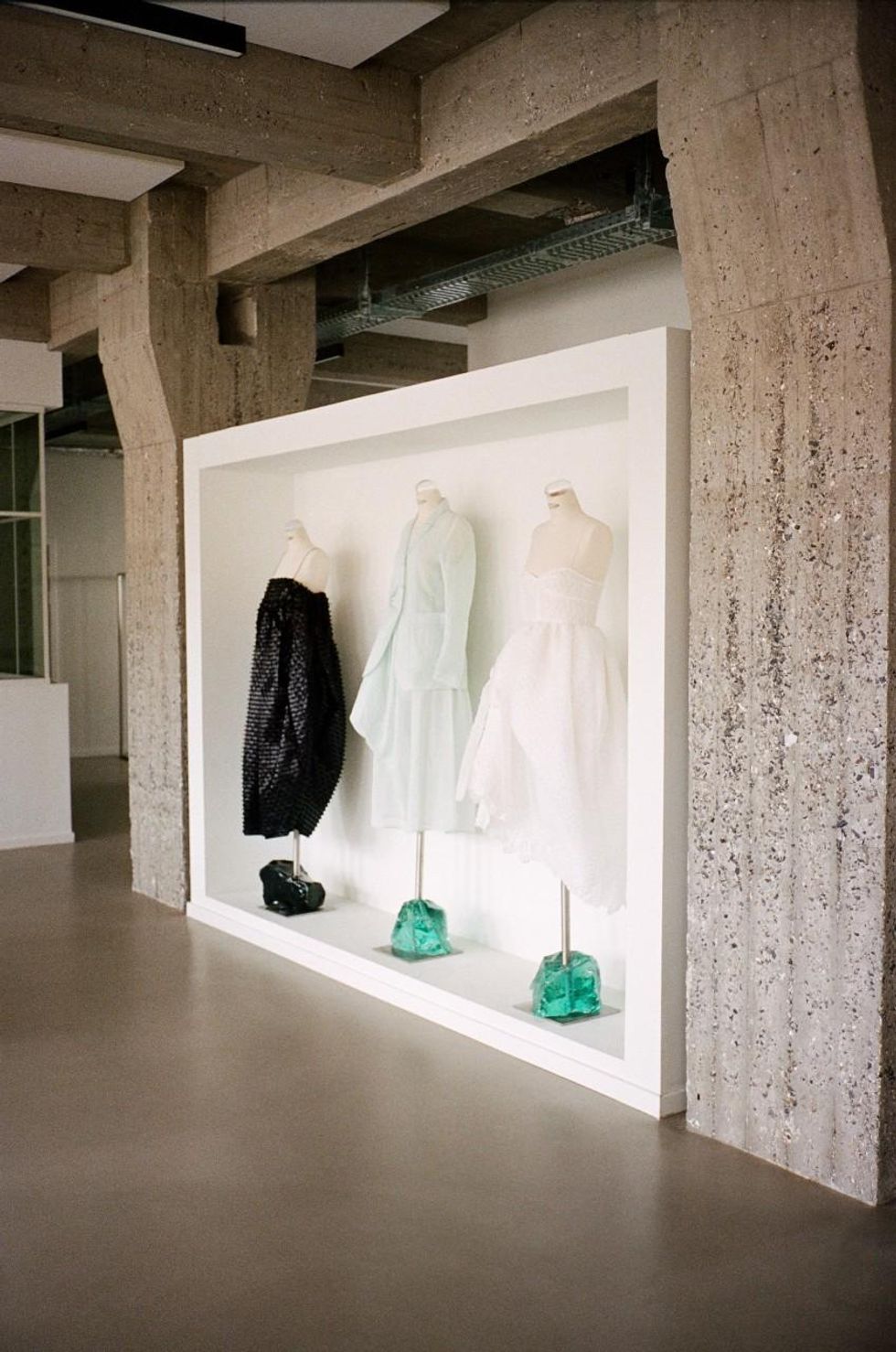
“I think, for me, walking into art school and seeing the mood boards, everything up on the wall, everybody's different aesthetic, it was like walking into a dream or a fairytale and kind of realizing that that can be a career path, that can be your job.”
A Snapshot of Bahnsen's Office Playlist:
Weather Storm by Massive Attack
Feeling by Oval
Die Dinge des Lebens by To Rococo Rot
Overcome by Tricky
The Narcissist by Dean Blunt and Inga Coperland
Knee-Deep in the North Sea by Portico Quartet
Wandering Star by Portishead
dlp 1.3 by William Basinski
Baltic Birch by Mary Lattimore
Birds, Part I by Christophe Chassol
LA Hills Burn At The Peak Of Winter by Croatian Amor
Andata (Electric Youth Remix) by Ryuichi Sakamoto, Electric youth
Poppy by Andras
Miss You by Trentmøller
Midnight In A Perfect World by DJ Shadow
Want more stories like this?
We Can't Stop Thinking About the Fashion Month Spring '23 Runways
An Intimate Look At the Happenings of Paris Fashion Week
A Closet That Challenges the Concept of Fantasy
0 Comments